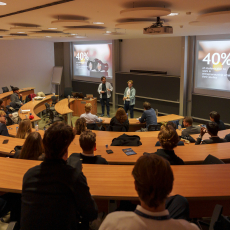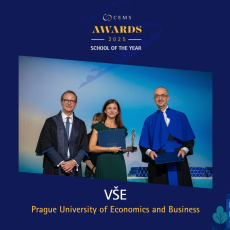25% of respondents to the global survey of recent CEMS graduates said they did not think the move to hybrid working would make any difference to their career prospects at all, while only 14% thought the impact would be negative.
The benefits of hybrid work
Following initial survey results, CEMS explored the findings in more depth through qualitative interviews with young professionals around the world who are just entering the workforce.
The majority of interviewees felt that hybrid working was the ideal set up. They spoke of the benefits including:
- Opportunities to travel while working- hybrid offers more flexibility, allowing more time for them to travel and even work whilst travelling (workcations), instead of taking longer vacations.
- Feeling valued. When working in a hybrid way young professionals feel that they are trusted and valued by their employer, as they are provided with freedom to set their own work schedule.
- Broader access to jobs - hybrid adds a whole new layer of flexibility to take on jobs that weren't accessible in the past.
- Reduced costs - the majority of graduates interviewed mentioned that they could save money and time by living in areas just outside big cities and commuting less frequently
- Better work/life balance and wellbeing - Hybrid working allows more time to pursue hobbies, study and exercise. It provides more time to spend with family and friends – with an overall positive impact on wellbeing.
- Greater focus. Working between the office and home allows for focus and quiet time to get things done when needed, rather than constantly being in a busy office setting.
Hybrid rather than remote
Interviewees emphasized that they were positive about hybrid working, however not fully remote. They believe that spending face-to-face time with colleagues inside and outside of office hours is vital for career success – in particular networking opportunities, innovation and learning. They stressed the importance of teams regularly meeting in person and having working structures in place.
Organisations must set coherent hybrid strategies
Giorgio Benassi, Group Head of Talent at H&M Group, a CEMS corporate partner, commented:
“When analysing the perspective of our early career population at H&M, we see the same trend emerge - tilting towards the impact of hybrid work being positive. The primary reasons are an increase of productivity, by being able to split time between home and office and finding long-term career sustainability through a positive blend of work and life demands.
At the same time, we know that networking plays a critical role in determining career possibilities - due to the social nature of human beings - and that effect cannot be entirely removed. So, will recent graduates change their perspective on hybrid work as they move through their careers?
It will very much depend on how we, as organizations, are able to set coherent hybrid workplace strategies which level the playing field. I believe in the coming years organizations will need to become more intentional with their hybrid workplace strategies, finding ways to maximise people’s time by creating more purposeful ways of being in the office, and at home.”
Graduates seek hybrid work
Nicole de Fontaines, Executive Director of CEMS said:
“Our graduates – many of whom will be in leading positions at some of the world’s most influential companies - are overwhelmingly positive about the move to hybrid work, as it offers them the flexibility they have been craving for many years. They tell us that they are attracted to employers which offer hybrid and are more reluctant to work for those which are unable to accommodate this flexibility.
On the other hand, they do not want to work remotely full time. Young professionals recognise that regular face-to-face interaction with their colleagues on a weekly basis is vital to their career success – particularly when it comes to relationship building and learning new skills. They do not want to lose that social aspect of work. In this sense employers need to balance the desire for flexible hybrid work with plenty of opportunities for teams to collaborate in person – both inside and outside the office.”




